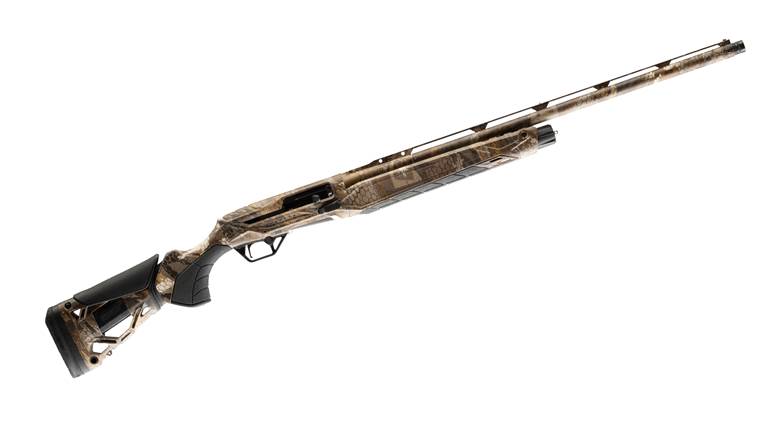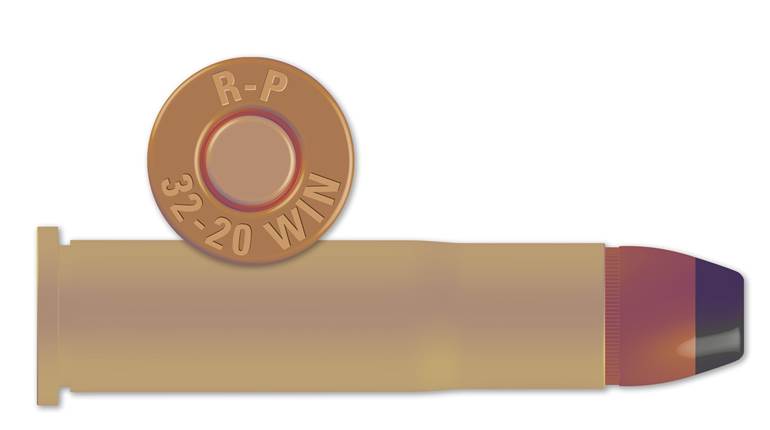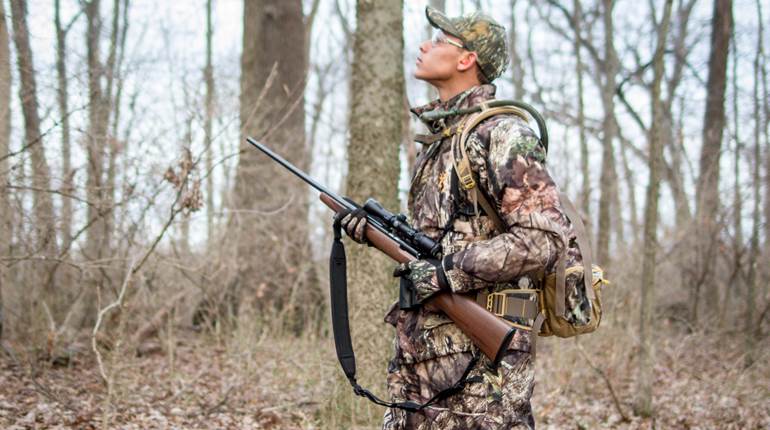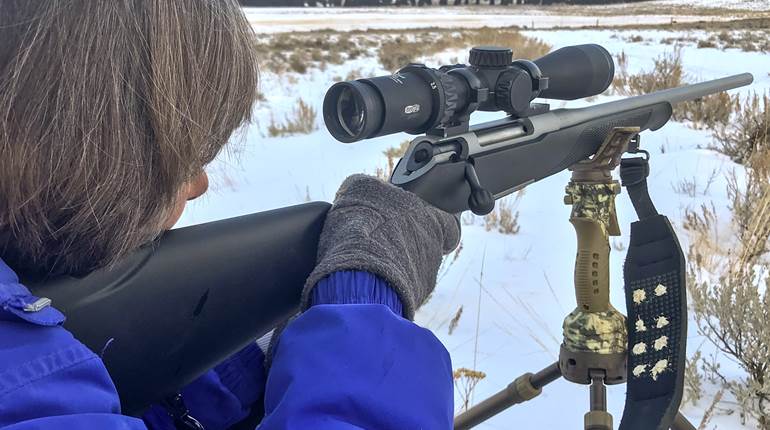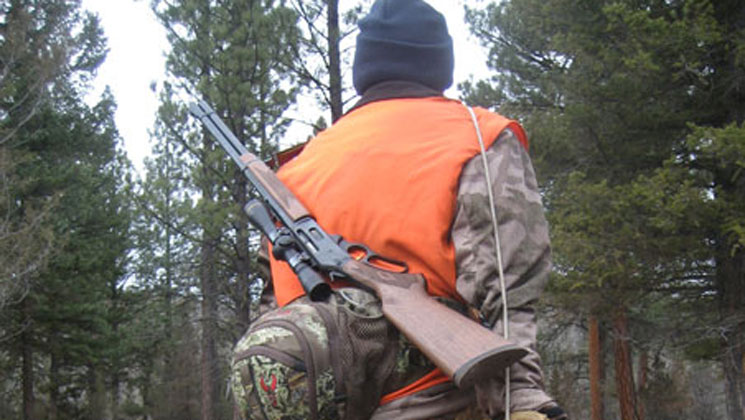
Shooting game at long-range is the craze these days. But launching a bullet at game across a faraway field takes the suspense and fun out of stalking close. To keep excitement in the hunt in recent years I’ve mostly hunted with rifles of a limited range that make sure I adhere to the short-range game. 
Keeping anticipation in the hunt can be accomplished several ways. One approach is to hunt with a low-velocity cartridge that has a rather drooping trajectory, like the .45-70 Gov’t. A second method is to significantly reduce the velocity of bullets fired from a standard cartridge, say firing 150-grain cast bullets at a slow 2,000 f.p.s. from a .30-‘06 Sprg. Iron sights are another path, not so much because of the sights, but the limitations of vision.
The .35 Rem. (left), introduced in 1906, has been a favorite short-range hunting cartridge, along with the .30-30 Win. (right).
Slow Go
Antelope hunting is presumed a long-range game. This myth is the due to countless stories in outdoor magazines over the years that have done a great disservice to antelope and antelope hunting. I believed the long-range theory for years. But after making a shot, the farther I walked to a dead buck, the more detached I felt from hunting.
The last time I hunted antelope my walk shortened up considerable when I carried a Marlin 336C chambered in .35 Rem. The lever-action’s magazine was filled stubby .35 cartridges loaded with Sierra 200-gr. Pro-Hunter bullets powered by 37.0 grs. of Ramshot X-Terminator propellant. With a muzzle velocity of 2,135 f.p.s, I could aim right on out to 150 yards.  A hard wind blew rain sideways and kept me walking in the slight shelter of the coulees. I peeked out every so often to scan ahead for antelope. About noon I saw a band of 30-some antelope trotting toward me across a low hill. They were wild in the wind, though, and the herd turned as one and ran, like a flock of birds cupping their wings to catch the wind. The antelope disappeared into a steep coulee. I hurried to the crest. One boulder to the next I peeked below. A buck stared up at me from 60 yards. The hammer cocked and I shot. The buck made a short run on stilted legs and fell in the grass. The brief walk to the buck was very satisfying.
A hard wind blew rain sideways and kept me walking in the slight shelter of the coulees. I peeked out every so often to scan ahead for antelope. About noon I saw a band of 30-some antelope trotting toward me across a low hill. They were wild in the wind, though, and the herd turned as one and ran, like a flock of birds cupping their wings to catch the wind. The antelope disappeared into a steep coulee. I hurried to the crest. One boulder to the next I peeked below. A buck stared up at me from 60 yards. The hammer cocked and I shot. The buck made a short run on stilted legs and fell in the grass. The brief walk to the buck was very satisfying.
Right, one shot from a Marlin 336C in .35 Rem. collected this antelope buck.
The .45-70 Gov’t. is another cartridge that sustains the excitement of the hunt. Mine is a Marlin Model 1895G. I could shoot 300-gr. jacketed bullets at nearly 2,000 f.p.s. out of the Marlin to somewhat flatten trajectory. But I went retro and shoot plain-base bullets cast from a Lyman 457122 mold. The bullet is commonly known as the Gould’s 45-330 Express and has been around since the 1880s. Bullets weighed 336 grs. cast of wheel weights with 2 percent tin added and cost only a few pennies apiece. For a deer-hunting I load 46.0 grs. of IMR 3031 that gives the Gould’s bullet a muzzle velocity of 1,473 f.p.s. from the Marlin’s 18.5” barrel. Trajectory is 2” above aim at 50 yards, 1” high at 100 yards and 6” below aim at 150 yards.
This whitetail buck was shot at 80 yards with a cast bullet fired from a Marlin 1895G .45-70 Gov’t.
A couple Novembers ago I watched over a timbered flat. A nice whitetail buck trotted into the open at about 250 yards. That would have been a cinch shot if I’d been carrying my .25-06. But it was far outside the range of the .45-70’s plodding bullet.
The buck bedded down near a big stump and the stalk was on, crawling down a shallow draw. I inched out of the draw. The buck saw the movement and stood up at about 80 yards. It fell at the shot.
This group was shot with a Marlin 336C .35 Rem. with handloaded cartridges consisting of Sierra 200-gr. Pro-Hunter bullets and X-Terminator propellant.
This group was fired from a Marlin 1895G .45-70 Gov’t. shooting bullets cast from a Lyman 457122 mold and IMR 3031 powder.
This 5-shot group was shot at 100 yards with SAECO 200-gr. cast bullets from a Winchester Model 94 BB .356 Win.
Regular Rifles
The same slow-bullet method works for regular rifles. A plus is scopes on normal rifles help those with aging eyes. I’ve had great success hunting deer, antelope and even elk with bullets fired at low-velocity from cartridges like the .300 Savage, .30-06 Sprg., .356 Win. and .35 Whelen.
My favorite whitetail-deer hunting load for my Remington Model 700 .35 Whelen is 245-gr. cast round-nose bullets with a muzzle velocity a shade under 2,000 f.p.s. That mild load is really no handicap for the short shots at deer in river bottom thickets.
One November day I walked slowly beneath giant cottonwoods, stopping every few steps to search ahead for deer. What I saw was a bull elk in its bed beneath a juniper. I shot it from 30 yards. The elk started to struggle to its feet, but collapsed from a second shot. Field dressing showed both bullets had punched lengthwise through the elk and left exit holes the size of a quarter.
Upright Iron Sights
Iron sights play a big part in keeping a rifle honest for up-close hunting. Open sights on some rifles are no more than an afterthought. Other sights, though, are made purposely for hunting.


A Lyman aperture sight helped shoot this tight group from a Mannlicher-Schoenauer Model 1909 rifle chambered in 8x57mm.
A Lyman Model 21 aperture rear sight on my Winchester Model 94 .30-30 is clearly a hunting sight with a .077” diameter aperture that pivots down to reveal a .166” aperture. Aiming with the large aperture, the Model 94 shoots 3-shot groups just under and over 2”s at 100 yards.
I hunted antelope one fall with the Winchester. Several stalks concluded with antelope remaining out of range and my knees full of cactus spines. Finally, I crawled to within 80 yards of a doe. The front bead settled against the antelope’s ribs. The antelope ran at the shot, slowed and then fell over in the short grass. 
My Mannlicher-Schoenauer Model 1909 rifle (right) chambered in 8x57mm wears a Lyman Model 36 aperture sight with exact windage and elevation adjustments. The sight is mounted over the rear of the bolt so the aperture sits close to the eye to increase sight radius for a precise aim.
A couple years ago I took the rifle antelope hunting. Rain fell and clouds pressed against the prairie. I saw one buck during a day’s hike, but it disappeared into the fog. The next two days dawned clear with mountains blue in the distance on the western horizon and the plains brilliant across their expanse. I never saw an antelope. Still, it was enough to walk with a good rifle in hand. The last night sitting in camp I thought I heard a plane passing. But it was just the wind sighing through the coulees.

Additional Reading:
Is the .45-70 Govt. Cartridge Still Relevant?












